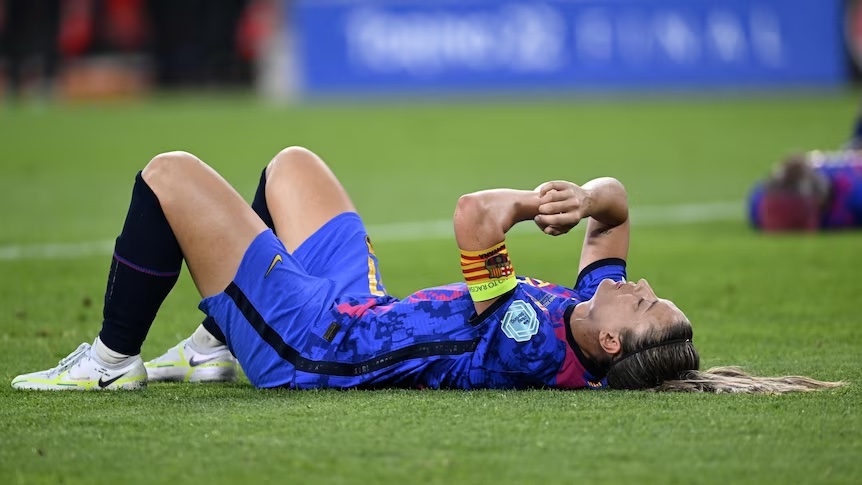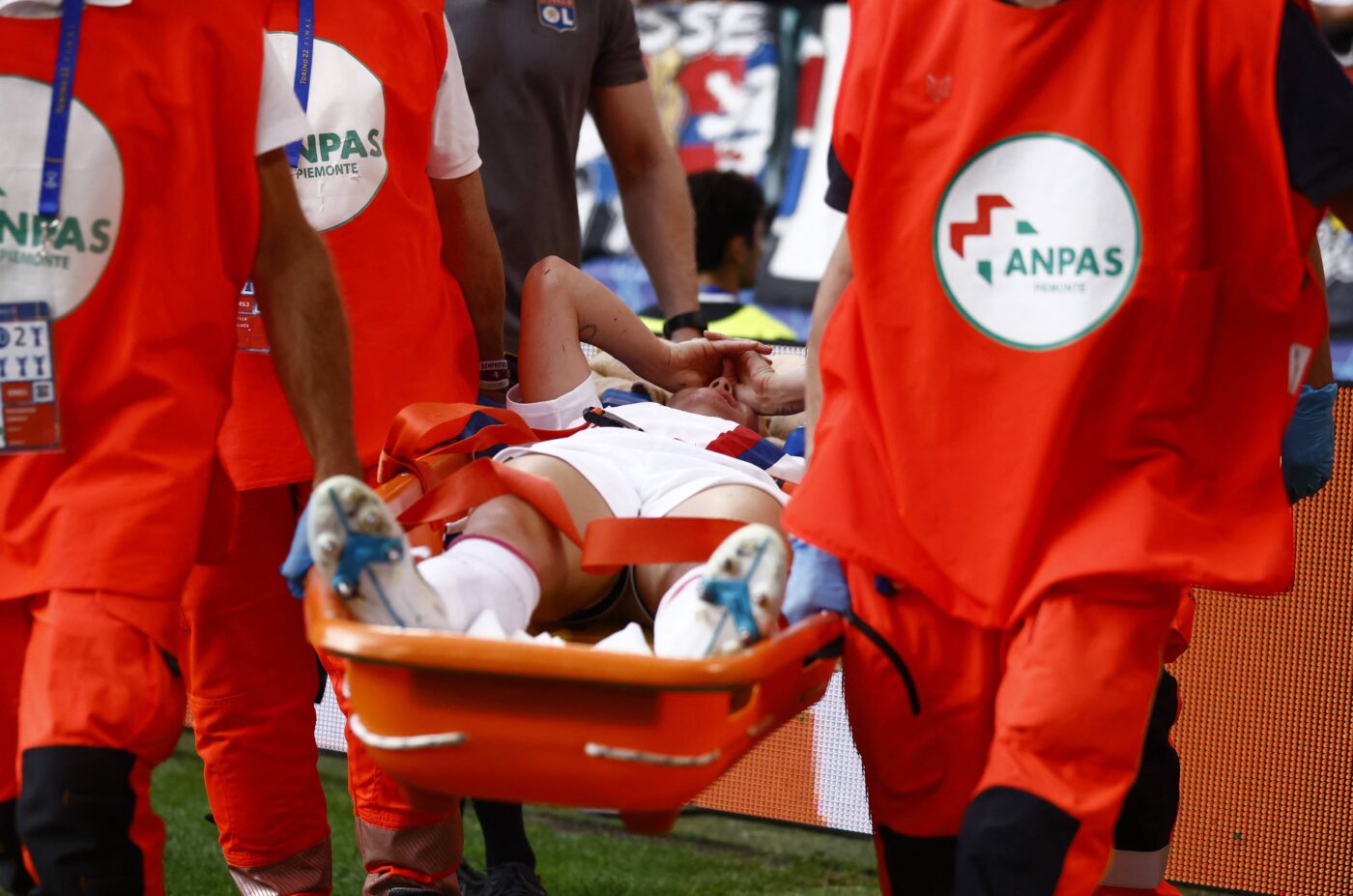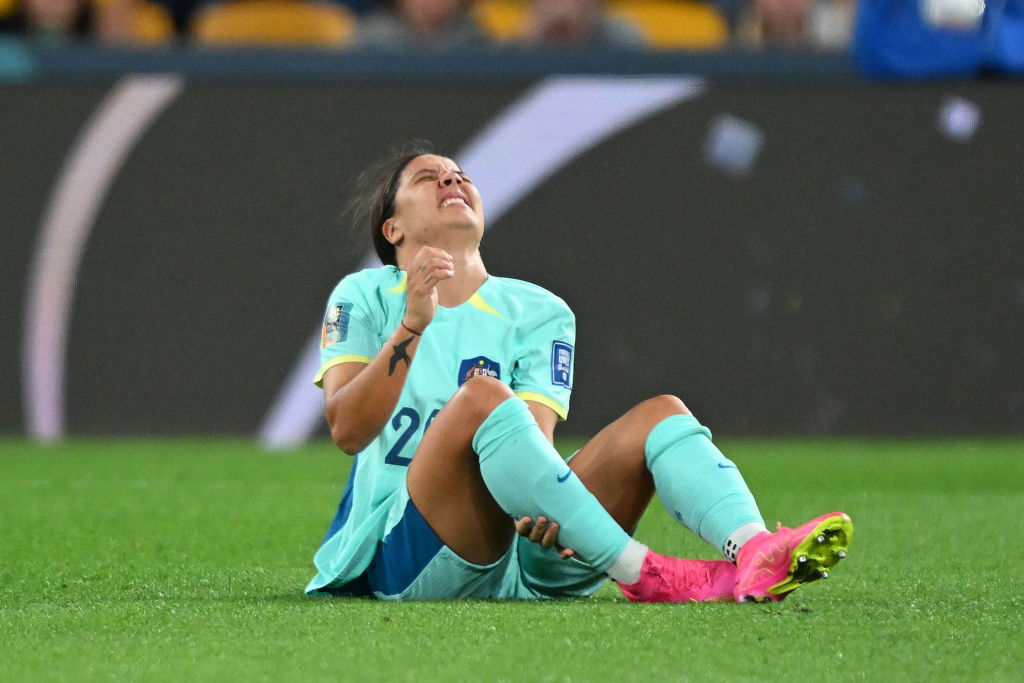Matildas captain Sam Kerr was Australia’s best hope for gold at this summer’s coveted Olympic Games in Paris, but the Chelsea forward, who spent much of last year’s historic FIFA Women’s World Cup stuck on the sidelines with injury, has become the latest victim to what many are calling an epidemic within the women’s game.
It’s been described as an epidemic that threatens to plague the women’s game, but ACL injuries – injuries to a player’s anterior cruciate ligament – continue to rise to unprecedented levels and female footballers are rightly worried that they could be the next to fall victim.
Conversations were already being had during last year’s FIFA Women’s World Cup with as many as 30 female stars noticeably missing from the historic tournament in Australia and New Zealand, all suffering similar injuries that kept them out of the biggest competition in women’s football history.
Two-time Ballon d’Or winner Alexia Putellas almost didn’t recover in time for Spain’s World Cup winning campaign, but managed mere minutes across the entire tournament. Putellas joined Beth Mead, Vivianne Miedema, Leah Williamson and Australia’s Ellie Carpenter and Kyah Simon in a long list of female footballers to have endured season-ending ACL injuries throughout their careers.
With Australia’s captain Sam Kerr, one of the best players in the world, suffering a devastating ACL injury this week, questions need to be asked: what is causing the disproportionate amount of anterior cruciate ligament injuries within the women’s game and what can be done to stop it?
What’s causing so many ACL injuries in female footballers?
Studies suggest that female footballers are six times more likely to suffer ACL injuries compared to their male counterparts; a confronting statistic given the growing profile of the women’s game on the international stage.
But this certainly isn’t a new phenomenon. For the better part of half a century, studies into possible causes have failed to reach a conclusive answer, but each certainly points to the unique differences between men’s and women’s bodies and football’s failure to address them.
For one, female players have less muscle surrounding the knee where the anterior cruciate ligament is located. It leads to less strength and stability for female players when jumping or turning quickly, which could lead to serious rips or tears.
Another suggestion is the lack of attention to female players’ physical development at an early age, with many professional footballers denied the facilities at lower levels of the game.
“It’s important to get the basic fundamentals really young – there is a difference when it comes to how we [boys and girls] are brought up playing,” Chelsea forward Fran Kirby told Sky Sports.
“When I was coaching at Reading, the grassroots girls couldn’t even access a gym. The most important thing is teaching young girls the basic mechanics of being a footballer and being a sportsperson – how to run properly, how to change direction and how to build strength in their muscles.”

Another reason could be the lack of specialised gear for women’s footballers, with as many as 82% of female players in Europe claiming to feel discomfort when wearing traditional football boots, according to the European Club Association.
Women’s feet are naturally narrower than men’s and can often have a wider toe area where many female footballers report persisting discomfort when wearing the wrong footwear.
“For a long time, women have been treated like little men,” former Matildas player Sarah Walsh said ahead of the tournament. “We haven’t even scratched the surface and it is a hundred years of underinvestment in women’s football that has brought us to this point, where we have lost a number of different players for [last year’s] World Cup.”

With the Paris Olympics just a short six months away, Australia’s captain Sam Kerr will likely fail to recover in time to compete, with typical ACL injuries requiring six to nine months to fully heal before returning to the highest level.
Australia defender Ellie Carpenter took 295 days to return to action for her club side Olympique Lyonnais after tearing her ACL in the UEFA Women’s Champions League Final, whilst Maltidas centurion Kyah Simon, who injured her ACL in October 2022, spent more than eight months on the sidelines before getting her first minutes back on the pitch.
Sam Kerr’s injury is a tragic reminder that not enough is being done to address the epidemic that is continuing to rip through the women’s game. For one of the fastest-growing sports in the world, with record-breaking attendances and viewing figures driving interest in the women’s game, it’s simply not good enough; football is failing its female players.
